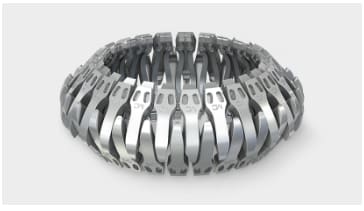Ingenuity
Structural
- May 17, 2001
- 2,374
I require help from those engineers who are more digitally intelligent than I...
Whilst this is not a "structural" issue it is possibly an issue that many a "modern" engineer is faced with today in this digital and electronic age.
I have a structural report that I authored in MS WORD and includes several digital photos (about 10 to 15 or so JPEG's) included in an appendix. The report total about 20+ pages. When saved as a WORD file, the report, is 10 MB. I conveniently conveted it to an Acrobat PDF and it is now 5MB.
I need to e-mail this file across the other side of the world...i tried compressing with Win ZIP but it was not too efficient only giving me 1 or 2% compression...
So now i attach it to my e-mail and send this single file...but it will NOT send and i get an error that it times out. I think (know?) it is the fact that the file is sooo large (well sort of, depends on what you call large) that it is unable to be sent.
FYI...i am DSL, with a very large ISP, and i called the ISP's tech department (not sure how tech they really were) and they said i have 10MB capacity (which may have nothing to do with my e-mail file size but rather the server capacity they give me?). They suggested i email it in 1 MB packages.
I ended up sending the WORD file as text only, then 4 other emails with the photo's - total 5 e-mails. I made each e-mail about 1 MB or less - real pain. Now my report looks (is!) disjointed and unprofessional.
I could always reduce the resolution of the JPEG's, but that is a pain too.
I would be interested in fellow engineers who know how to solve this problem...or maybe at least share my frustration!
TIA
Whilst this is not a "structural" issue it is possibly an issue that many a "modern" engineer is faced with today in this digital and electronic age.
I have a structural report that I authored in MS WORD and includes several digital photos (about 10 to 15 or so JPEG's) included in an appendix. The report total about 20+ pages. When saved as a WORD file, the report, is 10 MB. I conveniently conveted it to an Acrobat PDF and it is now 5MB.
I need to e-mail this file across the other side of the world...i tried compressing with Win ZIP but it was not too efficient only giving me 1 or 2% compression...
So now i attach it to my e-mail and send this single file...but it will NOT send and i get an error that it times out. I think (know?) it is the fact that the file is sooo large (well sort of, depends on what you call large) that it is unable to be sent.
FYI...i am DSL, with a very large ISP, and i called the ISP's tech department (not sure how tech they really were) and they said i have 10MB capacity (which may have nothing to do with my e-mail file size but rather the server capacity they give me?). They suggested i email it in 1 MB packages.
I ended up sending the WORD file as text only, then 4 other emails with the photo's - total 5 e-mails. I made each e-mail about 1 MB or less - real pain. Now my report looks (is!) disjointed and unprofessional.
I could always reduce the resolution of the JPEG's, but that is a pain too.
I would be interested in fellow engineers who know how to solve this problem...or maybe at least share my frustration!
TIA




